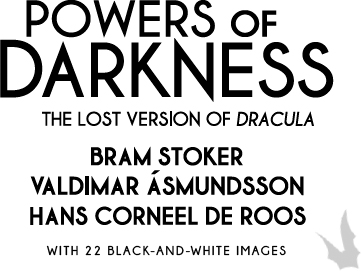

In 1901 Icelandic publisher and writer Valdimar Ásmundsson set out to translate Bram Stoker’s classic novel, Dracula. Called Makt Myrkranna, this Icelandic version was unnoticed outside the country until 1986, when Dracula scholars discovered Stoker’s original preface to the book. It was not until 2014, however, that noted Dracula scholar Hans Corneel de Roos realized that Ásmundsson hadn’t merely translated Dracula but had, rather, penned an entirely new version of the story, with some all-new characters and a re-worked plot. The resulting narrative is one that is shorter, punchier, more erotic, and rivals the original in terms of suspense.
Powers of Darkness marks the first ever translation into English of Makt Myrkranna. This volume includes the translation of the main text of the novel, thorough annotations that mark changes from the original text and other fascinating items of note, an introduction by Hans de Roos, a foreword by Dacre Stoker, an afterword by John Edgar Browning, and numerous illustrations, historical and new, including original illustations by de Roos of Dracula’s castle.
Icelandic Nobel Prize winner Halldór Laxness praised Powers of Darkness as one of the best works of Icelandic literature, drawing inspiration from it in the writing of his Under the Glacier. Stoker’s great grand-nephew Dacre Stoker aptly writes: “The resurrection of Makt Myrkranna illustrates another example of Dracula’s immortality.” Delivering all the dark glamour one expects from a cornerstone of Gothic literature, and drawing inspiration from Nordic sagas and myths, Powers of Darkness is truly a major literary rediscovery and a thrilling and essential new addition to the Dracula canon.